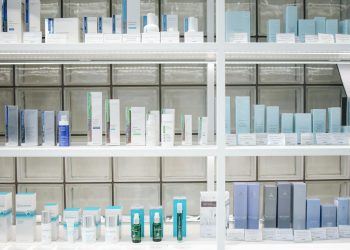In recent years, the beauty industry has undergone a significant transformation, shifting toward a more sustainable approach that prioritizes environmental responsibility, ethical sourcing, and consumer awareness. As consumers become more conscientious about the impact their purchasing decisions have on the planet, the demand for sustainable beauty products has risen dramatically. Sustainable beauty is not just a passing trend, but rather an ongoing movement that aims to minimize waste, reduce harmful chemical usage, and promote fairness in the beauty supply chain. This essay explores what sustainable beauty is, why it matters, and what you need to know in order to make more eco-conscious beauty choices.
1. Defining Sustainable Beauty
Sustainable beauty encompasses a variety of practices, products, and philosophies that align with the goals of environmental conservation and social responsibility. At its core, it focuses on reducing the environmental impact of beauty products while also ensuring that companies and brands follow ethical practices throughout the production and supply chain. This includes everything from how ingredients are sourced to how products are packaged and disposed of.
Unlike conventional beauty products, which may rely on harmful chemicals or contribute to excessive waste, sustainable beauty aims to promote products that are safer for both the individual and the planet. For example, many sustainable beauty brands choose to use plant-based, organic ingredients that are free from synthetic chemicals and are grown without the use of harmful pesticides or fertilizers. Additionally, packaging is often biodegradable, recyclable, or refillable, reducing the amount of plastic waste that ends up in landfills and oceans.
2. The Environmental Impact of Beauty Products
The beauty industry has long been criticized for its negative impact on the environment. In fact, it is estimated that the global beauty and personal care market generates over 120 billion units of packaging every year, much of which ends up in landfills or oceans. Plastic waste is a particularly concerning issue, with single-use plastic packaging being a major contributor to the planet’s pollution problem. Many beauty products, such as shampoo bottles, makeup containers, and lotion tubes, are made of plastic that is not recyclable or takes hundreds of years to break down.
Moreover, the production of beauty products often involves the use of harmful chemicals and synthetic materials that can pollute water sources, soil, and air. Chemicals like parabens, phthalates, and sulfates, commonly found in beauty products, are not only damaging to the environment but also to human health. These chemicals can accumulate in the body over time, potentially leading to adverse health effects, including hormone disruption and increased cancer risks.
Sustainable beauty aims to address these issues by promoting the use of eco-friendly packaging and natural, non-toxic ingredients. Brands committed to sustainability often prioritize refillable, recyclable, or compostable packaging, which helps reduce waste and conserve resources. Additionally, sustainable beauty products tend to use ingredients that are biodegradable and free from harmful chemicals, ensuring that they do not contribute to environmental degradation.
3. Ethical Sourcing and Fair Trade Practices
Another key component of sustainable beauty is ethical sourcing. Sustainable beauty brands are committed to sourcing ingredients in ways that promote fairness, respect for workers, and the protection of local communities. This often involves using ingredients that are harvested from natural resources in a way that doesn’t deplete or damage ecosystems. Fair trade practices are also an important part of ethical sourcing, ensuring that farmers and workers are paid fairly for their labor and that their rights are protected.
For example, many sustainable beauty brands source ingredients like shea butter, coconut oil, and cocoa from small-scale farmers in developing countries. These farmers often face challenges such as low wages, poor working conditions, and exploitation by large corporations. Sustainable beauty companies that engage in fair trade practices help to improve the lives of these workers by providing them with better wages, fair contracts, and safe working environments.
Sustainable beauty brands also tend to avoid ingredients that are linked to environmental harm or exploitation. For example, the use of palm oil in beauty products has been widely criticized due to its association with deforestation, habitat destruction, and human rights abuses. Many sustainable beauty brands have made a conscious effort to eliminate palm oil from their formulations or to source it from suppliers who follow ethical and sustainable practices.
4. Choosing Eco-Friendly Beauty Products
As consumers become more aware of the environmental and ethical implications of their beauty choices, it is essential to understand how to identify eco-friendly beauty products. While it may seem daunting to navigate the overwhelming number of beauty products available, there are a few key factors to consider when choosing sustainable options.
Ingredient Transparency: One of the first things to look for when selecting eco-friendly beauty products is ingredient transparency. Sustainable beauty brands typically disclose all of the ingredients in their products and often opt for natural, plant-based alternatives to synthetic chemicals. Look for products that are free from parabens, sulfates, phthalates, and synthetic fragrances, as these ingredients can be harmful to both the environment and your health.
Cruelty-Free Certifications: Another important aspect of sustainable beauty is animal welfare. Many sustainable beauty brands are cruelty-free, meaning they do not test their products on animals. Cruelty-free certification is a good indicator that a brand aligns with ethical practices. Look for brands that are certified by organizations such as Leaping Bunny or PETA, which ensure that products have not been tested on animals.
Eco-Friendly Packaging: Sustainable beauty products often come in packaging that is designed to minimize waste. Look for brands that use recyclable, biodegradable, or refillable packaging. Some companies even offer packaging-free products, such as shampoo bars or solid lotions, which are not only environmentally friendly but also travel-friendly and convenient.
Certifications and Labels: Many sustainable beauty brands carry certifications and labels that indicate their commitment to eco-friendly and ethical practices. Common certifications to look for include organic, fair trade, and vegan certifications. These labels provide a level of assurance that the products meet certain standards and align with your values.
5. The Benefits of Sustainable Beauty
The shift toward sustainable beauty offers a range of benefits, both for consumers and for the planet. For consumers, sustainable beauty products are often safer and gentler on the skin due to their natural ingredients and the absence of harsh chemicals. Many sustainable beauty products are also formulated to be cruelty-free, vegan, and free from allergens, making them suitable for individuals with sensitive skin or specific ethical preferences.
From an environmental perspective, sustainable beauty has the potential to significantly reduce the industry’s carbon footprint. By using eco-friendly packaging, promoting the use of biodegradable ingredients, and reducing waste, sustainable beauty can help reduce the industry’s impact on the planet. Additionally, by supporting fair trade practices and ethical sourcing, sustainable beauty promotes social justice and helps improve the lives of workers in developing countries.
6. How You Can Make a Difference
As a consumer, there are several ways you can make a positive impact on the beauty industry and support the shift toward sustainability. One of the most important steps is to educate yourself and become more mindful of the products you purchase. Take the time to research brands and read labels to understand what goes into the products you use. Whenever possible, choose brands that prioritize sustainability and ethical practices.
Another way to reduce your environmental impact is to minimize waste by choosing products with recyclable or refillable packaging. Consider using solid beauty products, such as shampoo bars or facial cleansers, which do not require packaging at all. Refill your products when possible, and recycle empty containers responsibly.
Lastly, consider supporting brands that give back to communities in need or invest in environmental initiatives. Many sustainable beauty brands donate a portion of their profits to causes such as environmental conservation, wildlife protection, or social justice programs.











